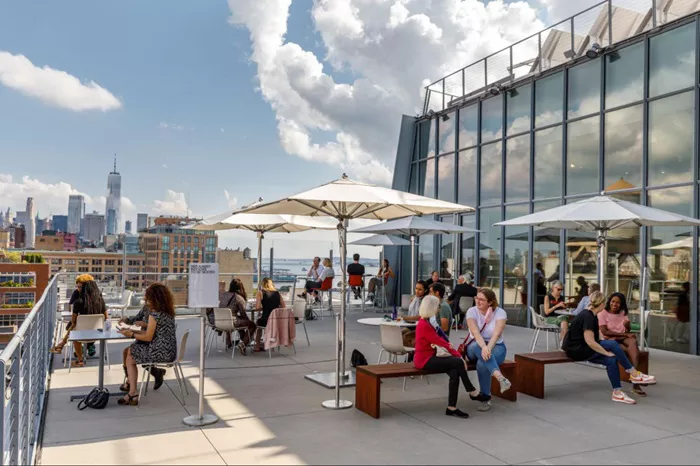When visiting one of New York’s most prominent cultural institutions, the Whitney Museum of American Art, visitors are often curious about whether they are allowed to capture the stunning artworks on display. Whether you’re a photography enthusiast or simply want to preserve a memory of your visit, it’s important to understand the museum’s rules regarding photography. This article will walk you through the Whitney Museum’s photography policies, offering a thorough breakdown of what is and isn’t allowed during your visit.
Personal Photography: What You Can and Cannot Do
Photography for personal use is generally allowed within the museum galleries. This means that as long as you are taking pictures for your own enjoyment—whether for memories or sharing with friends and family on social media—you’re free to capture the artworks. However, it’s important to note that there are specific restrictions in place to ensure the museum’s atmosphere and the safety of the artwork are maintained.
What You Can Do
Take Photos for Personal Use: Visitors are allowed to photograph the exhibits, installations, and artwork for personal, non-commercial purposes. This gives visitors the freedom to document their experience.
Non-intrusive Photography: Snap a quick photo while appreciating the artwork. As long as you respect the artwork and other visitors, personal photography is a great way to remember your time at the museum.
What You Cannot Do
Flash Photography: The use of flash is prohibited at the Whitney Museum. Flash can damage artwork over time, particularly for pieces that are sensitive to light. The intense brightness can also disrupt the experience for other visitors. For this reason, it’s important to disable flash on your camera or smartphone before taking a photo.
Tripods and Selfie Sticks: To maintain the flow of visitors and ensure the safety of both artworks and people, tripods and selfie sticks are not allowed within the museum galleries. These items can obstruct walkways and create hazards, both to visitors and the delicate artwork on display.
Professional Equipment: Professional video equipment, such as high-quality cameras with large lenses and video recording equipment, is prohibited without prior approval. The museum reserves the right to limit the use of certain types of equipment to prevent disturbances and potential disruptions.
Commercial Photography: Rules for Filming and Photography
While personal photography is permitted, commercial photography and filming are a different matter. If you are looking to use the museum’s space for professional purposes, such as for marketing, advertisements, or production, there are additional requirements.
Commercial Filming and Photography
Prior Approval Needed: Any commercial filming or photography within the museum requires explicit permission from the Whitney Museum staff. This includes activities such as photo shoots for publications, advertisements, and film productions.
Fees May Apply: Depending on the nature of the commercial activity, fees may be charged to cover operational costs associated with having a production crew on-site.
Special Arrangements: The museum may have specific guidelines that must be followed for commercial purposes. It’s essential to get in touch with the museum’s communications or press office ahead of your visit to ensure compliance with all rules.
Visitor Conduct: Respecting Fellow Guests and Museum Staff
When visiting the Whitney Museum, it’s important to be mindful of your behavior and respect for others around you. The museum aims to create an enjoyable and peaceful environment for all visitors, and there are clear guidelines to follow when it comes to photography.
Respecting Staff and Fellow Visitors
Photographing Staff: It’s considered inappropriate to photograph museum staff without their consent. This includes not only the museum’s guides and curators but also any other individuals working within the museum.
Avoid Obstructing Others: Visitors should be considerate of those around them. It’s important not to obstruct other visitors’ views of the artwork, especially in crowded spaces. Similarly, avoid setting up your camera equipment or taking extended photo sessions that could block walkways or views of the exhibits for others.
The Importance of Museum Etiquette
Maintain a Calm and Quiet Environment: The museum is a place for art appreciation, and visitors are asked to maintain a level of decorum when engaging with the exhibits. Refrain from using flash or making loud noises, as it could disturb other people’s experience.
Engage with Art Thoughtfully: Photography should enhance your visit, not detract from it. Engage thoughtfully with the artworks, and allow others to enjoy their experience as well.
General Museum Policies: Ensuring Safety and Enjoyment
The Whitney Museum takes the safety of its collection and its visitors seriously. As such, they have put in place clear rules to ensure everyone enjoys their visit and the artworks are well-preserved.
Prohibited Items
The museum reserves the right to confiscate any prohibited items that are brought into the galleries, such as flash equipment, tripods, and other professional gear. These items pose a safety risk to both the artworks and other visitors, and it’s crucial to adhere to these policies.
The Role of Museum Staff
Museum staff are trained to ensure the safety of both visitors and artworks. They monitor the galleries to ensure that visitors comply with museum policies and assist if there are any concerns regarding the preservation of the collection or visitor conduct.
Security Measures
The museum implements security measures that prevent the unauthorized use of equipment that could damage or disrupt the artworks. This includes scanning bags for prohibited items and ensuring that photography policies are enforced for everyone’s benefit.
Conclusion
In conclusion, the Whitney Museum of American Art provides ample opportunities for visitors to take personal photographs while ensuring that the museum’s environment remains enjoyable and safe for all guests. Understanding the guidelines around photography is crucial for making the most of your visit without disrupting the artistic experience or inconveniencing others.
By adhering to the museum’s photography policies, respecting your fellow visitors, and keeping a mindful attitude toward the artwork, you can enjoy a fulfilling and respectful visit to one of New York’s finest cultural institutions. So, go ahead—snap your pictures, but remember to keep the experience enjoyable for everyone around you.

